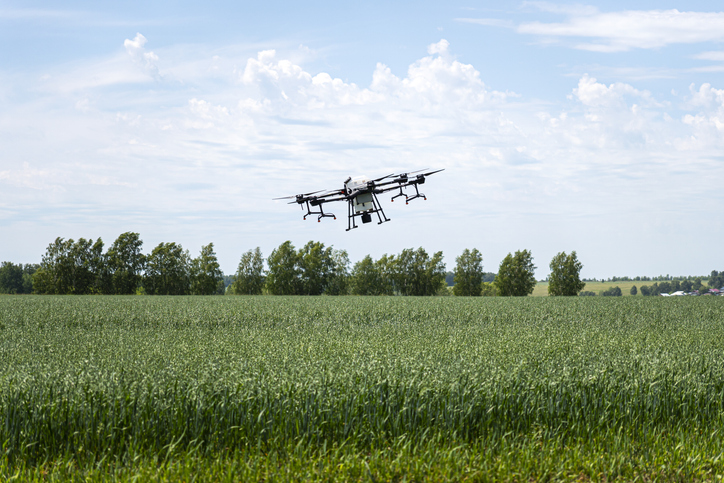FAA Imposes Temporary Drone Restrictions in New Jersey Amid Growing Sightings
The Federal Aviation Administration (FAA) has enacted a temporary prohibition on drone operations in multiple regions of New Jersey, effective until January 17. This ban, which applies unless special government authorization is granted for “special security reasons,” comes in response to a significant increase in drone sightings across the state. The increased sightings, which have been a source of concern for residents and authorities alike, have raised questions about potential security risks, particularly in densely populated urban areas.
Since mid-November, there has been a surge in reports of uncrewed aerial vehicles (UAVs) flying over New Jersey and surrounding areas, with many local residents and online observers expressing alarm at the presence of these drones. The FAA has taken immediate action to prevent further confusion, heighten security, and clarify the situation surrounding the sudden influx of drones in the region.
Areas Affected by FAA's Drone Ban
The FAA’s flight restrictions apply to a number of cities and towns in New Jersey, including Hamilton, Bridgewater, Cedar Grove, North Brunswick, Metuchen, Evesham, Camden, Gloucester City, Westampton, South Brunswick, Edison, Branchburg, Sewaren, Jersey City, Harrison, Elizabeth, Bayonne, Winslow, Burlington, Clifton, Hancocks Bridge, and Kearny. According to the FAA's Notice to Airmen (NOTAM), drones are prohibited from flying within a designated nautical mile radius of these areas, extending from the ground up to 400 feet.
This ban applies specifically to uncrewed aircraft systems (UAS), which includes commercial and recreational drones. However, under the regulations, recreational drone operators can still fly up to 400 feet in accordance with existing FAA guidelines, provided they are not flying within the restricted zones. Operators who wish to conduct operations in these areas must obtain prior authorization for “special security reasons.”
The FAA's Enforcement and Security Measures
The FAA has made it clear that any drones operating within these restricted zones and deemed to be posing an “imminent security threat” will be treated with the highest level of urgency. In extreme cases, the government reserves the right to use deadly force against drones that are considered a direct threat to public safety or national security. This strong stance has been outlined to reinforce the seriousness of maintaining strict airspace controls, especially in regions with high population densities.
In addition to the risk of direct security intervention, the FAA has highlighted potential legal consequences for operators who violate the drone restrictions. These include interception, detention, questioning by law enforcement, and even criminal charges. The FAA can also impose administrative penalties, including civil fines and suspension or revocation of flight certificates, as well as criminal charges for serious violations.
The FAA’s decision to implement these stringent measures underscores the growing importance of ensuring that drone operators comply with established regulations to avoid compromising public safety and security.
Investigating the Surge in Drone Sightings
The recent surge in drone sightings has prompted a comprehensive investigation led by a joint task force from the FAA, FBI, Department of Homeland Security, and Department of Defense. Over the past few weeks, the FBI has received more than 5,000 reports of suspected drone activity in New Jersey and surrounding states, spurring an in-depth analysis of the sightings.
After reviewing the data, authorities have concluded that the sightings are a mix of legitimate commercial drones, recreational drones, and law enforcement drones. In some instances, manned aircraft, including fixed-wing planes and helicopters, were mistakenly identified as drones. Additionally, certain sightings were later attributed to stars or other celestial objects being misidentified as unmanned aerial vehicles.
Despite these clarifications, the FAA remains vigilant about the potential security risks posed by unauthorized drones, especially given the increased prevalence of drones in the region. The restrictions aim to reduce confusion, improve airspace management, and ensure that security remains a top priority.
Related: Japan’s Space Ambitions Face Challenge as Space One Rocket Fails
Public Reaction and Legal Oversight
The decision to enforce temporary flight restrictions has generated mixed reactions from both the public and the drone industry. While many residents and authorities welcome the added security measures, drone enthusiasts and commercial operators have expressed concerns about the impact on their ability to operate in the region. The restrictions come at a time when drones are increasingly being used for a wide range of commercial, recreational, and law enforcement purposes, further complicating the matter.
The FAA and other government agencies continue to monitor the situation, and stakeholders are urged to stay informed about any updates or changes to the regulations. As the drone industry continues to grow, the development of clear, enforceable regulations will be essential to balance innovation with safety and security.
A Proactive Approach to Airspace Security
The FAA's temporary flight restrictions in New Jersey are a necessary step to address the rising number of drone sightings in the region and prevent potential security threats. As more drones take to the skies for commercial, recreational, and law enforcement purposes, it's crucial that strict regulations and enforcement measures are in place to ensure the safety of the public.
This development highlights the challenges of managing airspace in densely populated areas, especially when drones are becoming an increasingly common feature in daily life. The FAA’s proactive approach will play an important role in guiding the future of drone operations and ensuring that public safety remains a top priority.
















